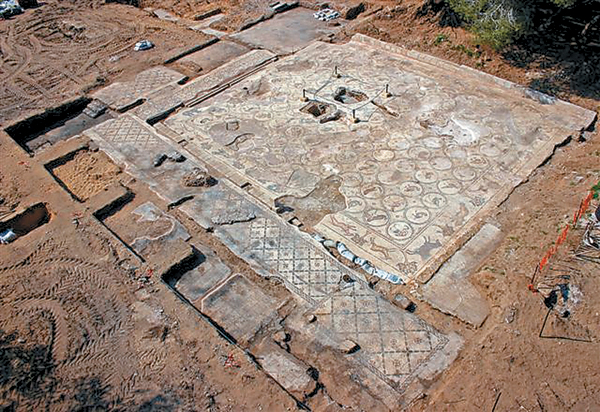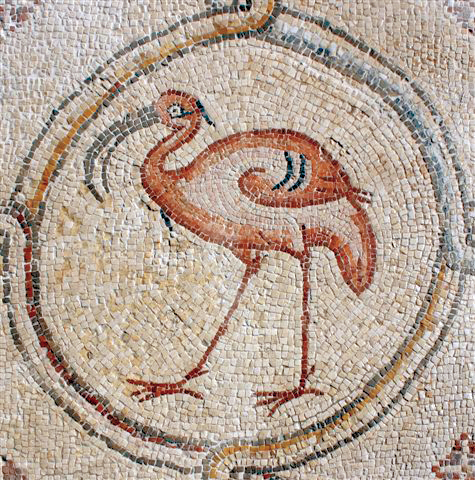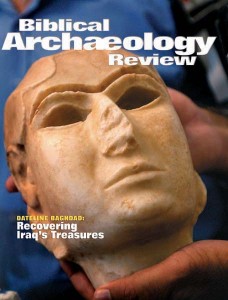Biblical Archaeology Review 31:6, November/December 2005
Strata: Better Late Than Never
Caesarea Mosaic Uncovered—Again

Fifty years after it was first discovered, a 53-by-48-foot mosaic that graces the floor of a late Byzantine-era villa
at Caesarea is finally being restored. The magnificent mosaic features 120 medallions containing flamingos, peacocks, ducks
and a border of other wild animals in hunting scenes and intricate geometrical designs. Because of the medallions the mosaic
has become known as the “Bird Mosaic.”
The public will have full access to the mosaic and for the first time will even be able to walk along a restored mosaic
floor, said Yosef Porath, Caesarea excavations director. “Originally what was the purpose of the floor? To be walked
on,” he said, noting that the mosaic had been restored and reinforced where needed.

The mosaic was part of an open-air courtyard entrance to a luxurious mansion, which Porath dates to the late sixth or
early seventh century A.D.
Parts of the mosaic were first unearthed in the 1950s by archaeologist Shmuel Yeivin, the first director of what is
today the Israel Antiquities Authority (IAA), but were then re-covered. The Byzantine-era villa,
which has been described by archaeologists as the most impressive ever to be discovered in Israel, and its mosaic are
located on a hill overlooking the Mediterranean and cover about a quarter of an acre.
Join the BAS Library!
Already a library member? Log in here.
Institution user? Log in with your IP address.

